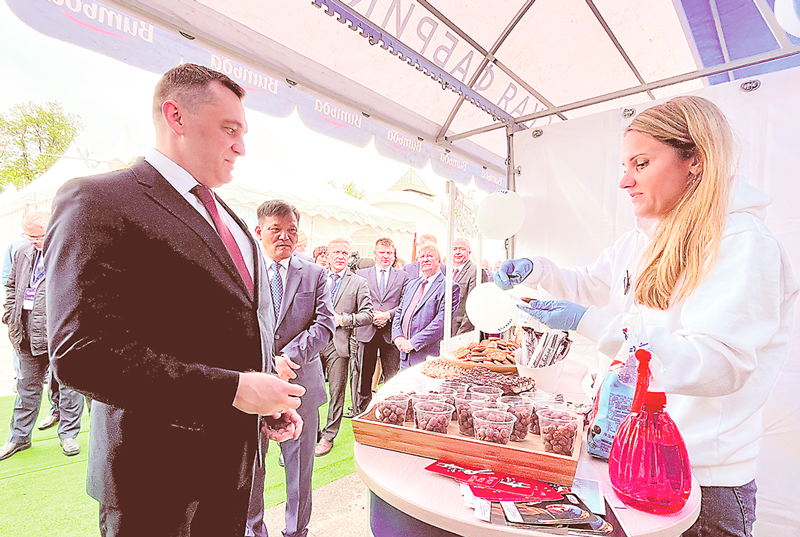
On June 22, President of Belarus Alexander Lukashenko held a meeting with the leadership of the Council of Ministers. The Head of State meets with the government at certain intervals to discuss the work of the economy. This time, the chairmen of the regional executive committees were invited to the conversation, since they are responsible for the dynamic development of the regions.
Following the five months outcomes published by Belstat, Vitebsk region shows positive dynamics in terms of the main indicators of socio-economic development. Head of the Vitebsk Branch of the Belarusian Institute of Strategic Research (BISR) Andrey Mishin commented on the key data confirming this especially for Vitbichi.
— It is worth noting that the effect was achieved due to the progressive recovery and growth in the new economic conditions — sanctions restrictions, changes in logistics chains. The gross regional product (GRP) of the region in current prices exceeded 6.5 billion rubles. Due to the positive increment in March — May, the growth rate in comparable prices since the beginning of the year amounted to 101.3 percent.
— Recently, investments have become one of the main economic topics, and what does the statistics say about this?
— In the Vitebsk region, the recovery dynamics of investments has been observed for several months. Following the January-May results, the region grew by 2.7 percent in comparable prices, and for "pure" May by 23.4 percent. There is a recovery of dynamics in the main components of investments in fixed assets, including the problematic category of last year (due to sanctions restrictions on business contacts from a number of unfriendly countries) — the cost of purchasing machinery and equipment.
Investments are one of the key indicators that determine the opportunities and reserves for the country development, attraction of technologies, improvement of the economy of existing enterprises and the creation of new competitive and popular industries. And the overall success and trajectory of the country's development depends on it.
— Are there still positive trends in trade?
— Vitebsk region has been steadily "growing" in terms of the volume and efficiency of wholesale and foreign trade in goods since mid-2022. The region is the absolute leader in the growth rate of wholesale trade (1.5 times increase in January-May) and the second after the city of Minsk in the growth of retail trade (a 3.8 percent increase).
Vitebsk region is increasing export supplies of goods (the maximum growth in the republic is 2.2 times) in combination with a reduction in imports (by 24.5 percent), which has a positive effect on the inflow of foreign currency (the balance is above $ 800 million). The foreign trade turnover in January-April exceeded $ 3 billion, the volume of exports approached $ 2 billion. This confirms the interest of foreign partners in the supply of our products.
— What is the situation in the real sector of the economy in such conditions?
— There is an increase in manufacturing production in the region (by 4.2 percent), which made it possible to compensate for the reduction in electricity production (as a result of the redistribution of the load on the Belarusian NPP) and to ensure an overall increase in industry of 0.9 percent. At the same time, there was no increase in critical stocks of finished products (the level of 58.6 percent of average monthly production reflects the specifics of seasonal fluctuations in a number of industries, primarily in light industry). The level of production of innovative products is being restored, in which the region has traditionally been one of the leaders in the republic.
In agriculture, the increase in production is maintained — by 2.9 percent. In agricultural organizations, the recovery trend continues — the livestock and poultry rearing increased by 6.2 percent, milk production — by 3.1 percent.
— And what is the situation with prices in the consumer market?
— The most significant and relevant issue for the population is the state of prices. The commodity price index has increased by 2.9 percent since the beginning of the year, having decreased by 0.4 percent in May. The main reasons for the price reduction are changes in food products, especially in terms of seasonal fluctuations in the "vegetables" group (a decrease of 18.8 percent compared to April).
Currently, annual inflation in the region does not exceed 5 percent, price changes are controlled.

